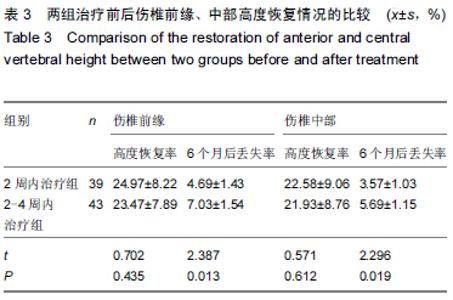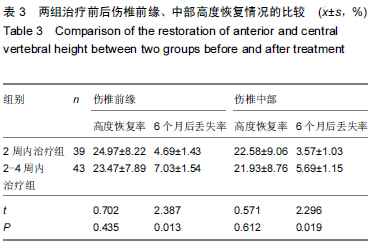|
[1] 黄晨,齐向北,康乐,等.防腐标本椎体成形术、椎体后凸成形术术后最大垂直载荷的影响因素[J].中华实验外科杂志,2013,30(12): 2658-2660.
[2] Kishikawa Y.Initial non-weight-bearing therapy is important for preventing vertebral body collapse in elderly patients with clinical vertebral fractures.Int J Gen Med.2012;5:373-380.
[3] 唐良华,程志刚,钟凯,等.经皮椎体后凸成形术治疗老年骨质疏松椎体压缩性骨折的早期效果[J].重庆医学,2013,42(24): 2837-2841.
[4] Yokoyama K,Kawanishi M,Yamada M,et al Comparative Study of Percutaneous Vertebral Body Perforation and Vertebroplasty for the Treatment of Painful Vertebral Compress ion Fractures.AJNR Am J Neuroradiol.2012;33: 685-689.
[5] 娄玉健,王秀会,陆耀刚,等.骨质疏松性椎体压缩骨折椎体后凸成形术与非手术治疗的临床对照研究[J].中国骨与关节损伤杂志, 2014,29(1):15-17.
[6] 李山珠,李国华,曾至立,等.椎体后凸成形术和椎体成形术治疗骨质疏松性椎体骨折疗效的对比研究[J].中国骨与关节损伤杂志, 2014,29(1):24-26.
[7] 柴仪,刘法敬,申勇.经皮椎体后凸成形术治疗高龄骨质疏松性椎体压缩骨折[J].中国老年学杂志,2013,33(18):4574-4575.
[8] 彭湘涛,刘训伟,李敏,等.可降解高分子网状球囊及磷酸钙骨水泥椎体填充后的力学变化[J].中国组织工程研究,2013,17(51): 8795-8800.
[9] 谢振钧,李仕国,陈广滨.经皮椎体成形术及经皮椎体后凸成形术治疗老年骨质疏松性椎体压缩骨折的效果[J].中国老年学杂志, 2013,33(13):3200-3201.
[10] Chen YJ,Chert WH,Chen HT,et al.Repeat needle insertion in vertebroplasty to prevent recollapse of the treated vertebrae. Eur J Radiol.2012;81(3):558-561.
[11] 厉驹,马镇川,易立明.椎体后凸成形术手术时机对椎体压缩性骨折近期疗效的影响[J].中医正骨,2011,3(11):38-40. |





